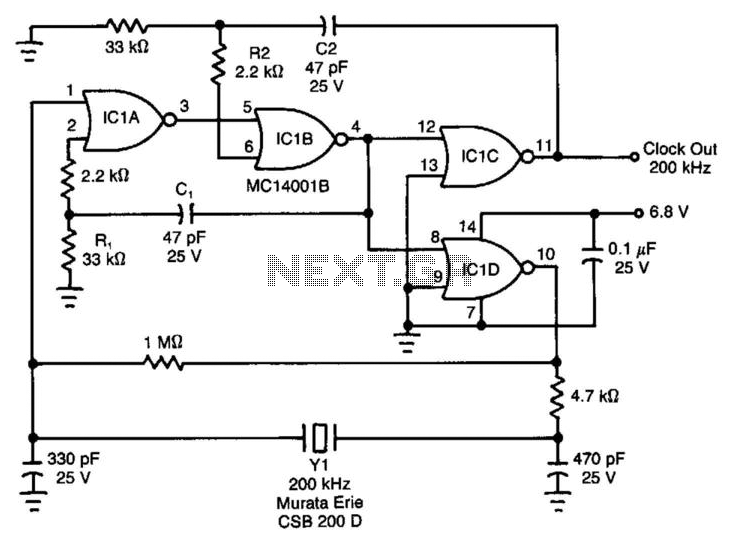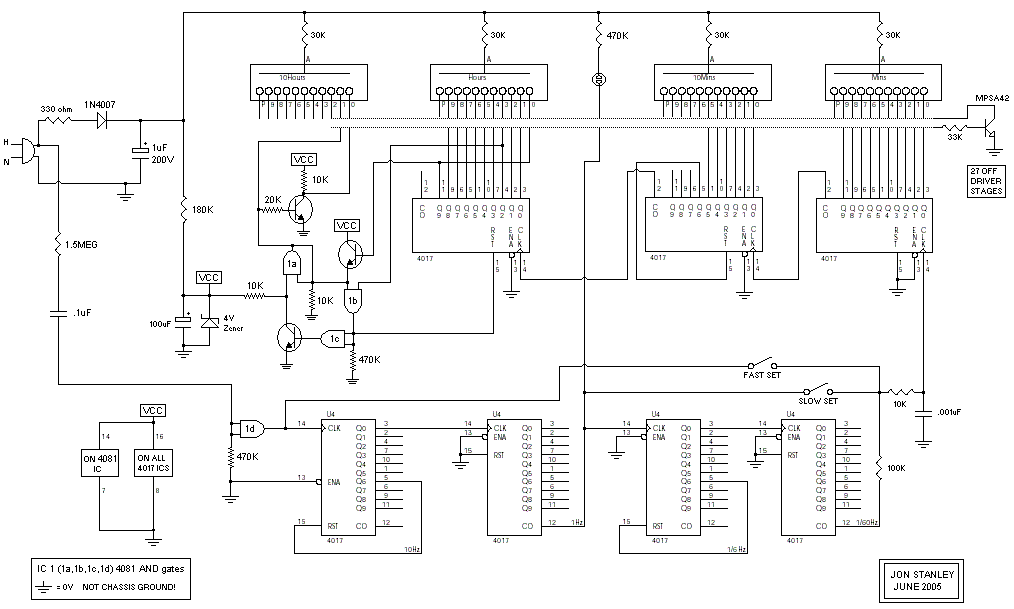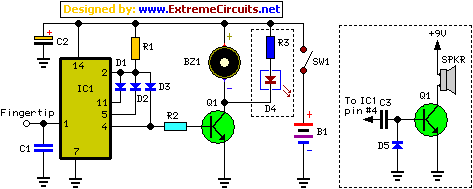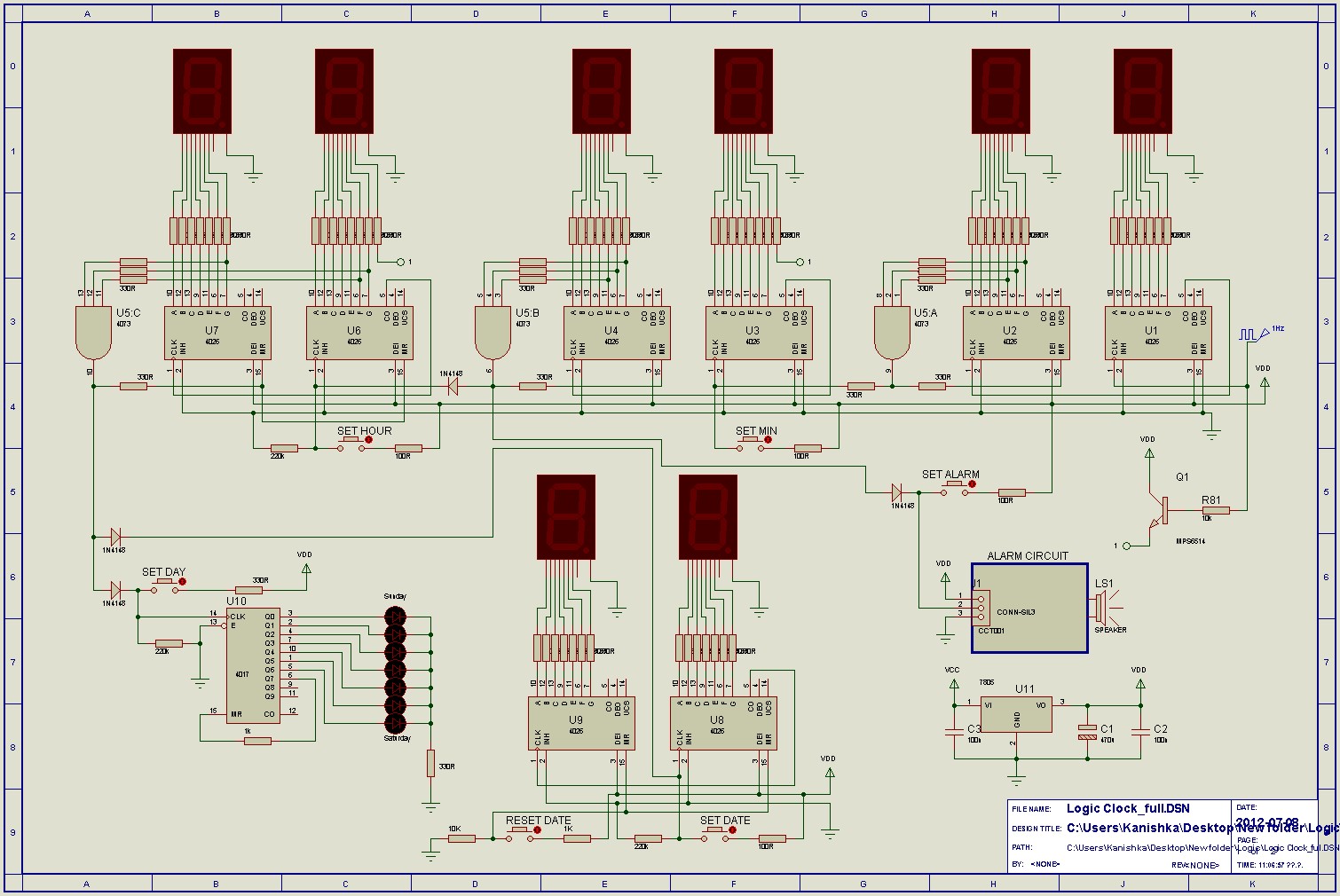
clock

Detailing the design and build of a 60 kHz time code receiver and clock, from PIC programmer to LED clock display.
The project involves the development of a 60 kHz time code receiver and clock system utilizing a microcontroller from the PIC family. The primary function of this system is to accurately receive time signals transmitted at a frequency of 60 kHz and convert them into a human-readable format displayed on an LED clock.
The circuit design begins with the selection of a suitable PIC microcontroller, which serves as the central processing unit. This microcontroller must have adequate processing speed and input/output capabilities to handle the incoming time code signals. The time code signals are typically demodulated by a radio frequency (RF) receiver module tuned to 60 kHz. The output of the RF module is connected to an input pin on the PIC microcontroller.
The microcontroller is programmed to interpret the demodulated signals and extract the time information. This requires the implementation of a specific algorithm that can decode the time code format being used. The programming can be accomplished using the MPLAB IDE along with the XC8 compiler, allowing for efficient code development and debugging.
Once the time information is decoded, the microcontroller drives a series of LEDs to represent the current time visually. A suitable LED display configuration, such as a 7-segment display or an array of individual LEDs, can be utilized. The design may include multiplexing techniques to control multiple displays with minimal pin usage on the microcontroller.
Power supply considerations are also critical in this design. A regulated power supply must be provided to ensure that the microcontroller and display operate reliably. Additionally, capacitors may be used for filtering to stabilize the power supply.
For user interaction, buttons can be incorporated to allow users to set the clock or switch between time formats. The circuit may also include a real-time clock (RTC) backup to maintain time during power interruptions.
In summary, the project encompasses the integration of RF communication, microcontroller programming, and LED display technology to create a functional 60 kHz time code receiver and clock, ensuring accurate timekeeping and user-friendly operation.Detailing the design and build of a 60khz time code receiver and clock. From PIC programmer to LED clock display.. 🔗 External reference
The project involves the development of a 60 kHz time code receiver and clock system utilizing a microcontroller from the PIC family. The primary function of this system is to accurately receive time signals transmitted at a frequency of 60 kHz and convert them into a human-readable format displayed on an LED clock.
The circuit design begins with the selection of a suitable PIC microcontroller, which serves as the central processing unit. This microcontroller must have adequate processing speed and input/output capabilities to handle the incoming time code signals. The time code signals are typically demodulated by a radio frequency (RF) receiver module tuned to 60 kHz. The output of the RF module is connected to an input pin on the PIC microcontroller.
The microcontroller is programmed to interpret the demodulated signals and extract the time information. This requires the implementation of a specific algorithm that can decode the time code format being used. The programming can be accomplished using the MPLAB IDE along with the XC8 compiler, allowing for efficient code development and debugging.
Once the time information is decoded, the microcontroller drives a series of LEDs to represent the current time visually. A suitable LED display configuration, such as a 7-segment display or an array of individual LEDs, can be utilized. The design may include multiplexing techniques to control multiple displays with minimal pin usage on the microcontroller.
Power supply considerations are also critical in this design. A regulated power supply must be provided to ensure that the microcontroller and display operate reliably. Additionally, capacitors may be used for filtering to stabilize the power supply.
For user interaction, buttons can be incorporated to allow users to set the clock or switch between time formats. The circuit may also include a real-time clock (RTC) backup to maintain time during power interruptions.
In summary, the project encompasses the integration of RF communication, microcontroller programming, and LED display technology to create a functional 60 kHz time code receiver and clock, ensuring accurate timekeeping and user-friendly operation.Detailing the design and build of a 60khz time code receiver and clock. From PIC programmer to LED clock display.. 🔗 External reference





